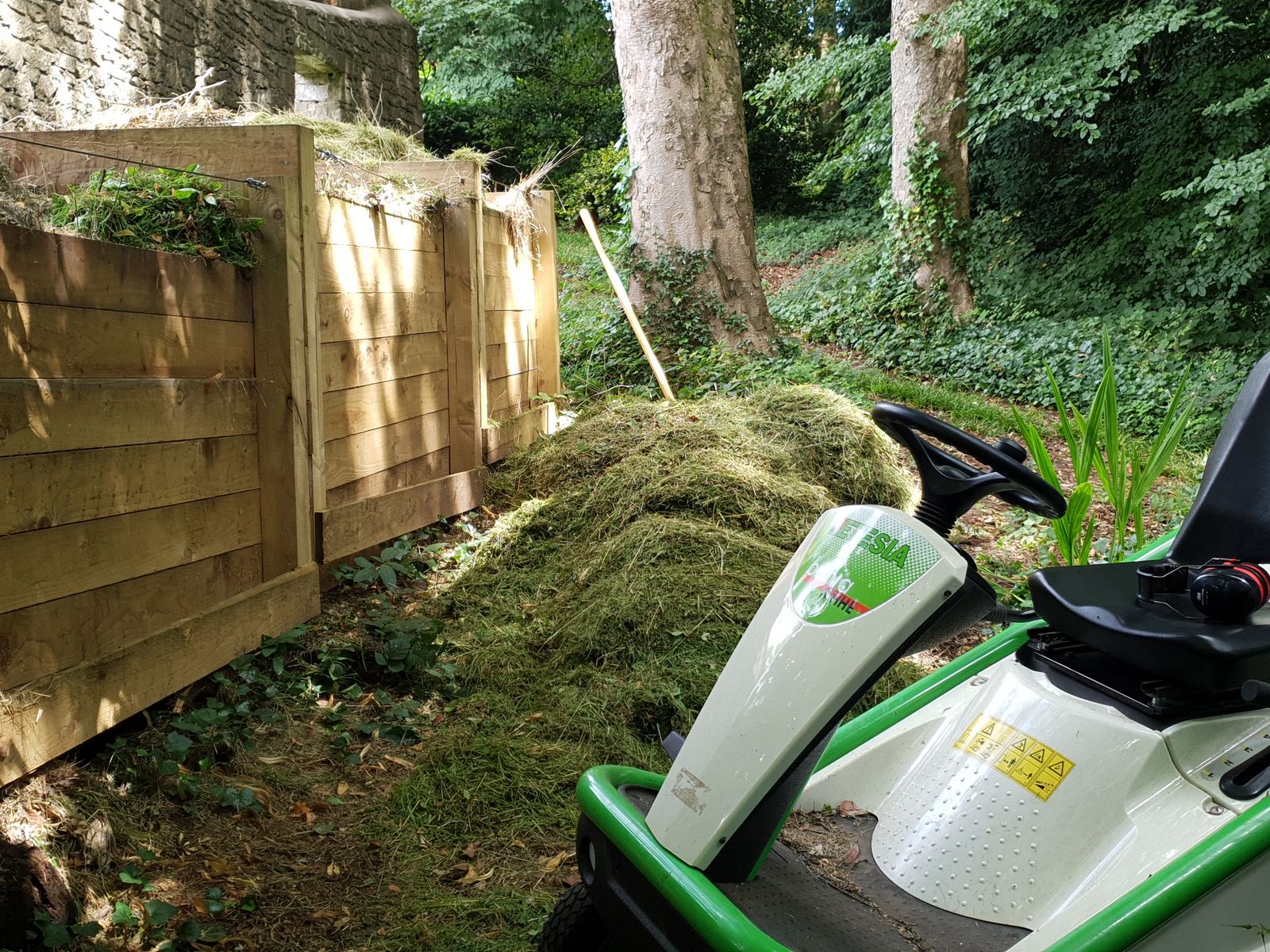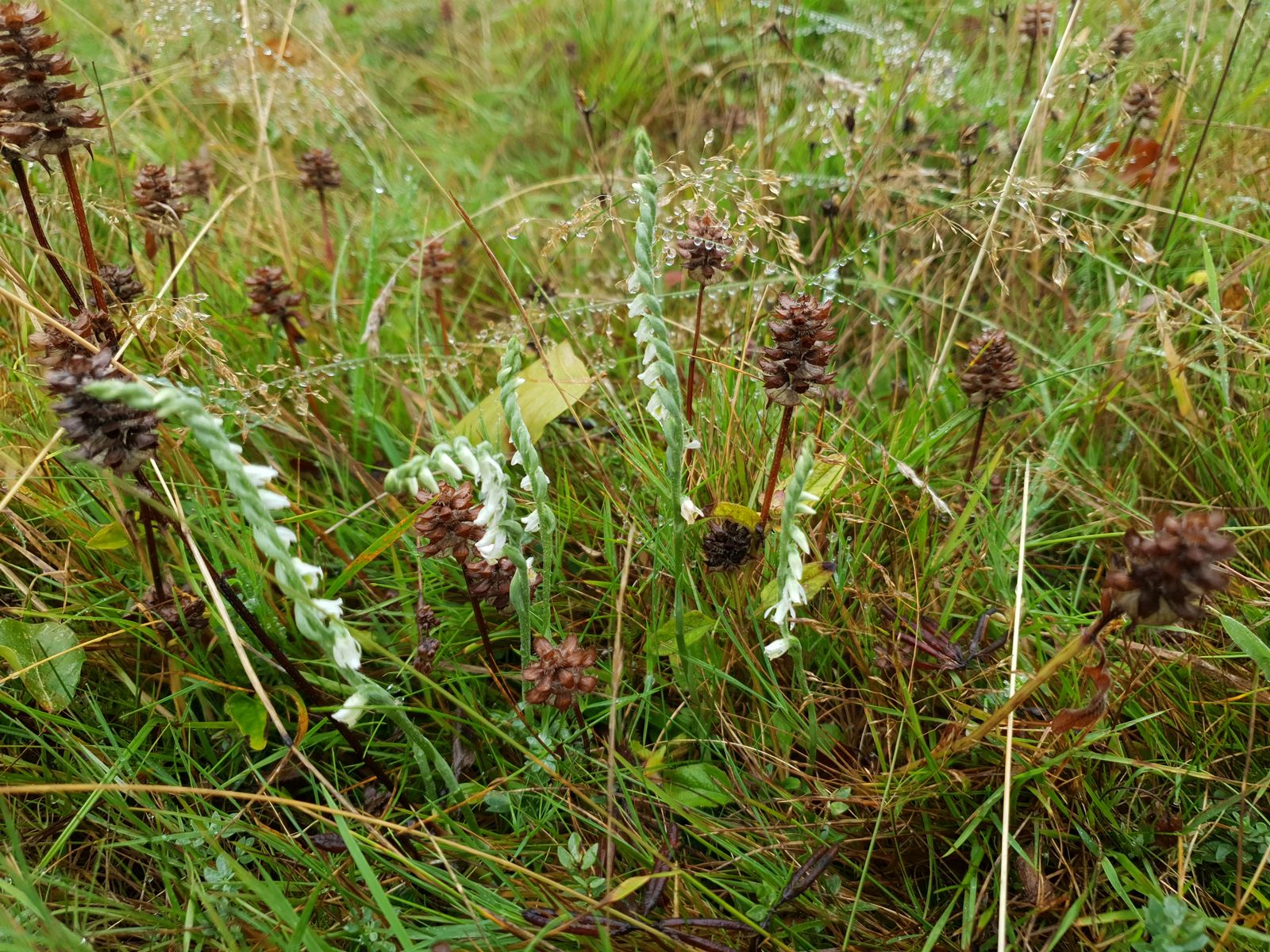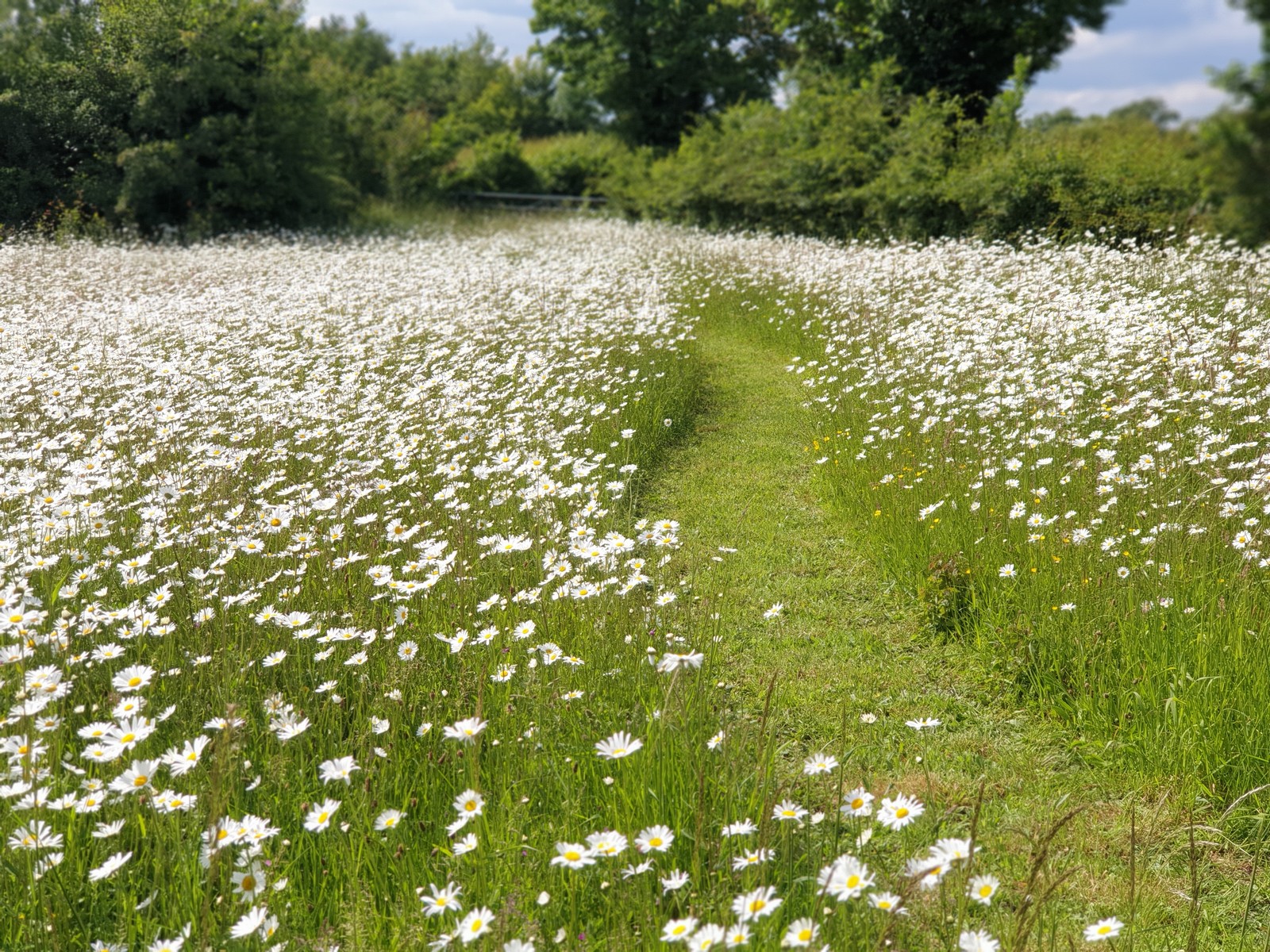
To maintain and improve the aesthetics, biodiversity and wildlife significance of any area of grassland, at some point during the year, it must be cut and the grass removed.
Plantlife Meadows Hub:
“Flower-rich meadows and grassland are open landscapes that require regular care and maintenance throughout the seasons. In a larger-scale or agricultural setting this will involve an annual hay cut and/or grazing, and in a smaller-scale or horticultural setting this might just involve a hay cut. Without this ongoing management, wild flowers will disappear from the meadows as the grass becomes dominant. Eventually the grassland will become overgrown, reverting to scrub and then woodland.”
The nature of your soil and the routine management regime will determine the diversity and abundance of your grasses, sedges, rushes and flowers. Bee Orchids and Autumn Lady’s-tresses growing amongst Quaking Grass and fescues on a thin limestone are beautiful but there is also value in swathes of tall grass dominated swards: Meadow Foxtail, Crested Dog’s-tail, Sweet Vernal-grass on a deep fertile loam.
This is written, in part, for some clients, and colleagues who ask how, and what equipment to use, so sorry if it gets a bit nerdy.
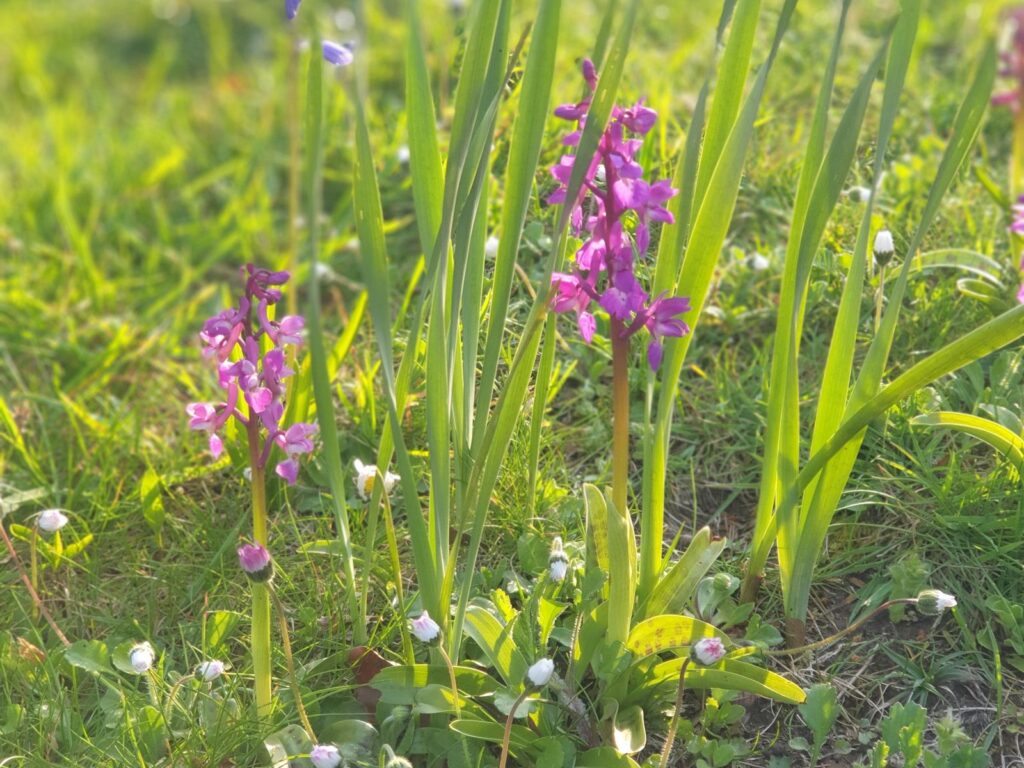
When & How To Cut
The challenge is management. Just cutting the grass and leaving it lying on the ground is not good: there are many contractors who can “top” your meadow, but the resulting mulch can increase fertility and swamp and kill the finer grasses and flowers, favouring the more robust tussock forming species, at worst leaving zones dominated by Hogweed, Dock, Nettle and Thistle. Tall herbs and robust grasses of course have value in themselves, but may not be a priority end result for your wildflower meadow. If you have a local farmer who can cut and collect, manage for hay, cultivate that relationship – it is vital!
When
Traditionally hay is cut mid-summer when the crop is at its most nutritious. If you want to shift the biodiversity of your meadow, cut it early when the peak of nutrient content is in the crop you remove. Removing nutrients this way can lower the fertility of the permanent grassland, favouring wildflowers. The timescale of this change will very much be determined by the native soil fertility. If the meadow has a good species diversity it can be good to leave it to late summer, providing a mosaic of habitat for butterflies, insects, birds & bees. From a natural history point of view, mowing is mimicking the grazing pattern of herds of ancient herbivores migrating through your back garden.
How
A rake and a pitchfork and an alpine tractor. Or something inbetween. Each site is unique and different methods have to be adapted to local needs. Cutting is straightforward enough but the biggest issue is the collection and removal of the cut grass. The 16 hp ride on lawn mowers are a good starting point: Etesia, Iseki, Kubota.
Below are a few of the sites we look after for wildflowers highlighting the equipment used and needed.
Case Studies
Case Study 1: South Gloucestershire, 40 Acres.
We currently look after a 40 acre estate in South Gloucestershire. The best option would be hay making, particularly with a lot of local, demanding, equine mouths to feed. However, the challenging steep slopes and narrow access tracks and gateways means the local independent agricultural contractors don’t want to be involved. With the landowners focus having been the restoration of the Victorian villa, the equipment needed for the estate management is still being built up. In the absence of a cut and collect system, we are mulching with a flail cutter. This has an advantage that we don’t have to process any cut hay, but conversely, we don’t have any hay to sell.
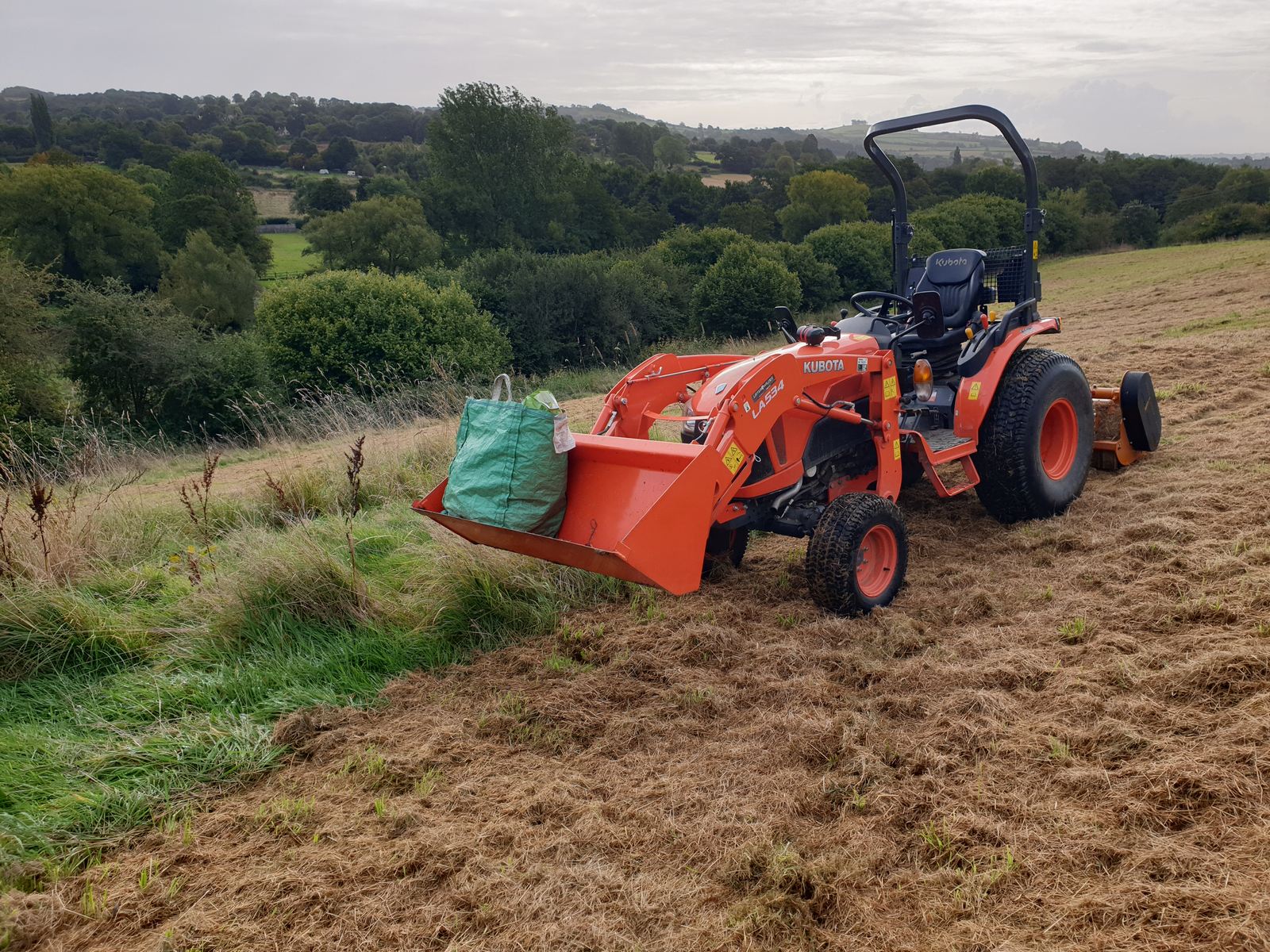
Finely shredding the cut grass does minimize the physical impact of mulching with clods of cut grass, and it does maintain the habitat as grassland in that it stops succession to scrub and tree. However, it is noticeable that not collecting is starting to favour robust tussock grasses such as Cock’s-foot, False Oat-grass, Tall Fescue and Yorkshire Fog. Some areas that were mulched too thickly feature bare ground and stands of Dock, Nettle & Thistle. Cutting later in the season can avoid this. The ideal machine for this situation would be a compact tractor that can work slopes, a drum mower and a buck rake to ‘rake’ up the cut hay and process as temporary haystacks. Ideally an alpine tractor like the AGT 1060. Mini baler’s are an option but notoriously high maintenance and very difficult on steep slopes. This is certainly a site where we have to look to the past for inspiration on a very difficult site. Haystacks will soon be returning to the fields of South Gloucestershire.
Case Study 2: Small Orchard & Hay Meadow, 1 Acre, Elberton
An open site featuring a lowland neutral semi-improved hay meadow. Ideally small scale haymaking would be undertaken but we don’t currently have access to any sort of mini baling. It is a real problem finding local contractors who have the requisite hugely expensive gear needed to manage scattered small fields. So much so that a few years ago we had a go at hand raking the field after power scything it. The power scythe on open flat terrain made short work of the cutting and is highly recommended, but the hand raking was very labour intensive and not for the faint hearted. Financially or physically. We’ve more recently managed to set up a regular cut & remove from a reliable local contractor. Using a buck rake is now the preferred method (basically a pitchfork on the front of a compact tractor). Orchids, old meadow grasses and a good diversity of wildflowers flourish here. In the absence of a local contractor, we would look to use a powerful enough ride-on, cut and collect mower, that could do both the initial cut and the aftermath mowing. Some research has shown that a summer cut followed by a cut every 3 weeks develops the higher species diversity. To this end, if funds allowed, a high end machine like an Etesia Hydro or Buffalo or the Iseki SXG range would be perfect.
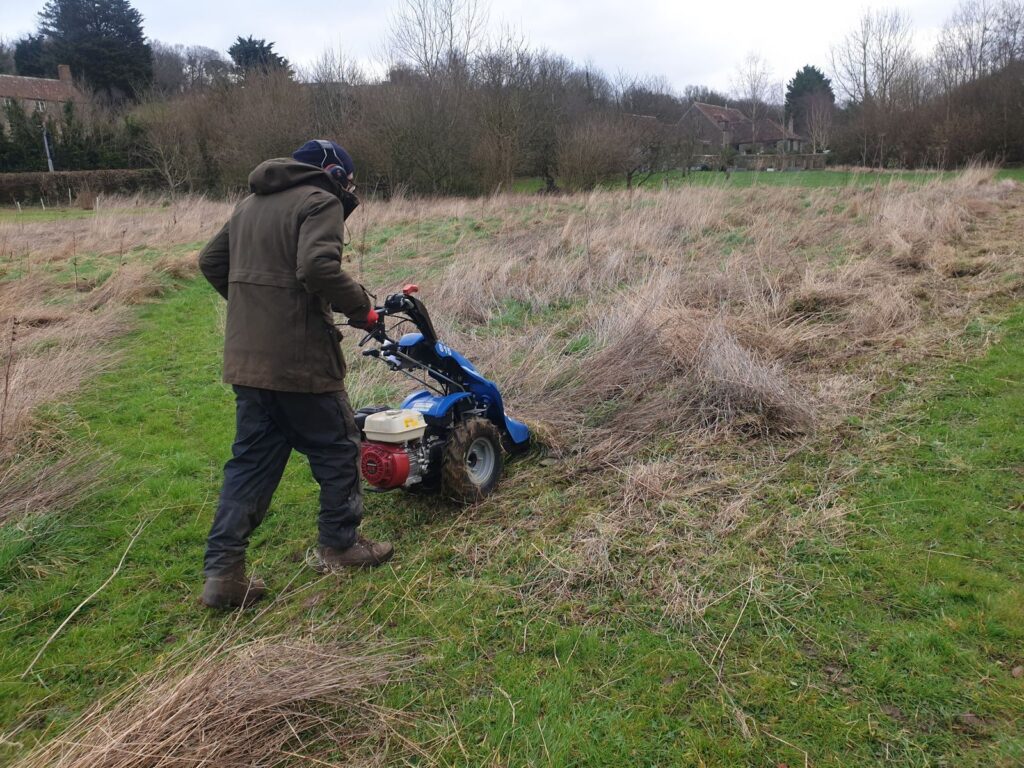
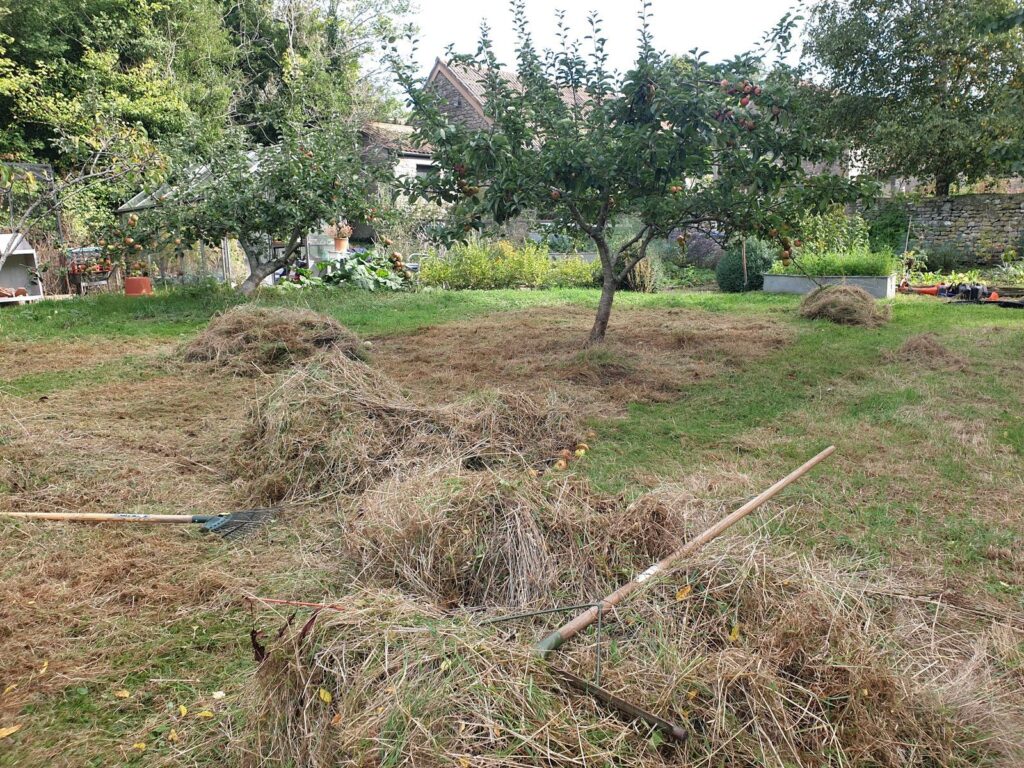
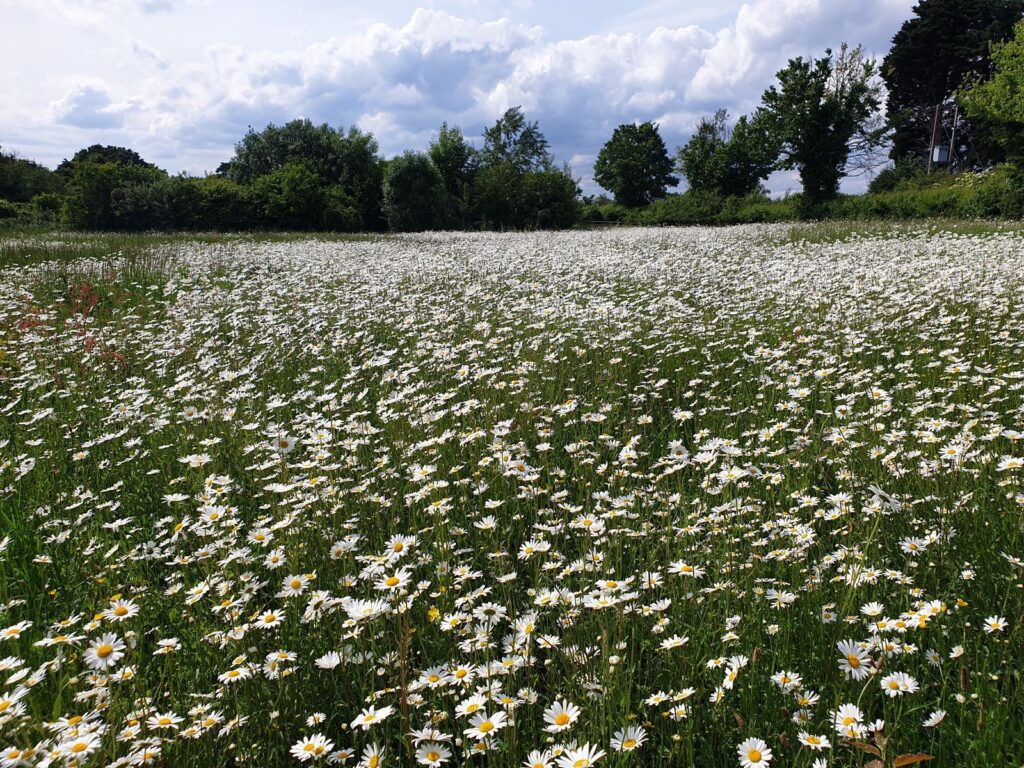
Case Study 3: Grade 1 Listed Church in Monmouthshire
A mosaic of small patches of meadow amongst gravestones and ancient Yew trees. Mindful of the cultural value of this site, the meadow management must be sensitive to needs of the parish. Ideally a small, agile cut and collect ride on mower (like an Etesia Hydro 80 – see below) would do the initial long grass cut followed up by regular late summer cutting. As the parish relies on volunteers, equipment is more small scale and therefore labour intensive. Heavy duty brushcutters and smaller lawn strimmers cope with the edges and more difficult to access areas of meadow.
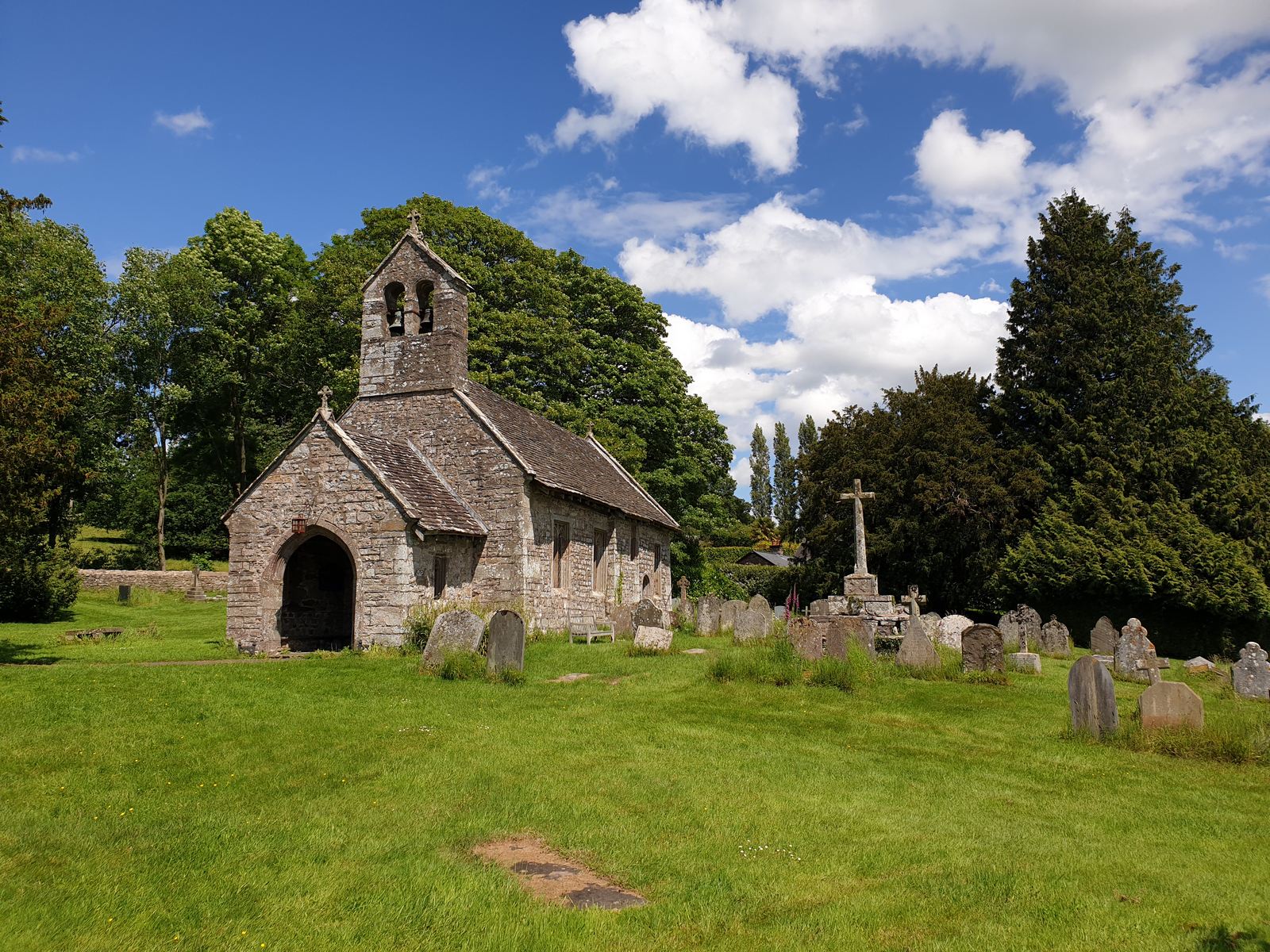
Case Study 4: Designed Landscape Garden, Wye Valley
Again small areas of grassland and lawn scattered across a designed landscape and garden. Too small for power scythes, tractors and agricultural contractors, so its back to our vast array of strimmers and brushcutters. Many different models for difficult access and different types of vegetation. Together with the raking and collecting very labour intensive. The recent addition of the Etesia Bahia 80 (Honda) has been a huge help ideal as it cuts and collects tall grass. All recycled through the excellent composting system. The smaller Etesia cut and collect are invaluable for site like this; perfect machines for narrow, steep awkward sites. An Etesia Hydro 80 with a Kawasaki engine would be ideal but you cant complain at a second hand Bahia.
